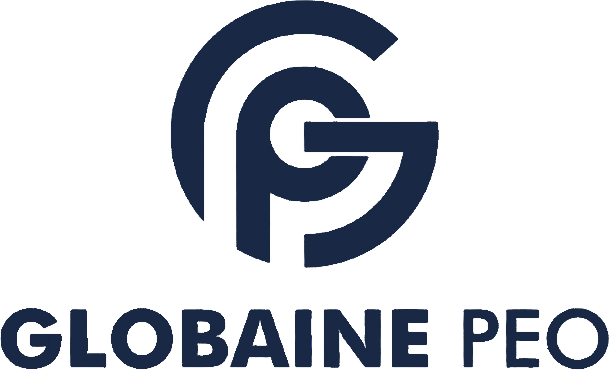When hiring employees in China, businesses must comply with a set of mandatory social benefit contributions. China’s social security system is regionally managed, meaning contribution rates vary across cities. Companies must stay updated on regional requirements to avoid penalties, ensure compliance, and manage employment costs effectively.
This guide outlines the key social insurance components, contribution obligations, and best practices for managing employee benefits in China.
What are the Components of China’s Social Security System?
China’s social security system is composed of five mandatory insurance programs and one housing fund. Employers and employees both contribute to these benefits, though the rates vary depending on location and role.
Here are the six essential components of China’s social security system:
- Pension Insurance
- Unemployment Insurance
- Medical Insurance
- Occupational Injury Insurance
- Maternity Insurance
- Housing Fund
These components ensure employees have access to retirement support, health coverage, and financial aid during unemployment, injury, or maternity leave.
What Are the Contribution Requirements for Each Social Benefit?
- Pension Insurance
Pension contributions are a shared responsibility between employers and employees.
- Employer Contribution: 14% to 16% of the contribution base.
- Employee Contribution: 8% of the contribution base.
💡 How It Works
Employer contributions are pooled into a “social account,” while employee contributions are deposited into an individual “personal account.” Upon retirement, employees draw from both. Employees must contribute for a minimum of 15 consecutive years to be eligible for pension benefits.
- Unemployment Insurance
This insurance provides financial support to employees in the event of job loss.
- Employer Contribution: 0.5% to 0.8% of the contribution base.
- Employee Contribution: 0.2% to 0.5% of the contribution base.
💡 How It Works
If an employee becomes unemployed, they can claim benefits for up to 24 months, provided they contributed for at least 1 year before losing their job. Payments are fixed, regardless of prior salary.
- Medical Insurance
Medical insurance covers employees’ healthcare expenses.
- Employer Contribution: 5% to 12% of the employee’s monthly salary.
- Employee Contribution: 2% of the employee’s monthly salary.
💡 How It Works
Employees receive a “medical treatment card” with a monthly balance for purchasing medication or healthcare services. When employees require hospital treatment, the medical insurance fund covers most of the treatment costs, and employees pay only a minimal amount upfront.
- Occupational Injury Insurance
This insurance covers treatment costs if an employee is injured at work.
- Employer Contribution: 0.5% to 3% of the contribution base.
- Employee Contribution: None (employer-only contribution).
💡 How It Works
If an employee is injured at work, the company submits a claim to the insurer. Once verified, the insurer reimburses the employer. However, the employer is responsible for the employee’s salary during recovery.
- Maternity Insurance
This insurance supports employees during maternity leave.
- Employer Contribution: 0.5% to 1% of the contribution base.
- Employee Contribution: None (employer-only contribution).
💡 How It Works
The insurance covers a female employee’s salary during her 4-month maternity leave. Payment amounts are calculated based on the previous year’s salary contributions.
- Housing Fund
While not technically “social insurance,” the housing fund is a mandatory requirement.
- Employer Contribution: 5% to 12% of the employee’s monthly salary.
- Employee Contribution: 5% to 12% of the employee’s monthly salary.
💡 How It Works
Both employers and employees contribute to the housing fund, which is used to provide affordable home loans to employees. Employees can withdraw funds from their account when buying property or after leaving their job.
What is the Contribution Base and How is It Calculated?
The contribution base refers to the salary used to calculate social insurance and housing fund contributions. The calculation method varies depending on the city.
Key Points to Know
- For new hires: The base is the employee’s total monthly compensation.
- For existing employees: The base is the average monthly gross salary of the previous calendar year.
- Minimum Base: 60% of the city’s average monthly salary.
- Maximum Base: 300% of the city’s average monthly salary.
If the employee’s salary is below 60% of the city’s average salary, then 60% of the city’s average is used as the base. If it exceeds 300% of the city’s average, the 300% cap is applied.
Example of Contribution Calculations
| City | Salary | Employer Contribution | Employee Contribution | Net Salary | Total Employer Cost |
|---|---|---|---|---|---|
| Beijing | RMB 10,000 | RMB 4,430 (44.3%) | RMB 2,226 (22.2%) + RMB 3 | RMB 7,451.6 | RMB 14,430 |
| Shanghai | RMB 10,000 | RMB 4,400 (44%) | RMB 1,800 (18%) | RMB 7,815 | RMB 14,400 |
💡 Key Insight: Despite slight differences in contribution rates, the employer’s burden remains similar in large cities like Beijing and Shanghai.
Summary
Compliance with China’s mandatory social insurance system is vital for businesses operating in the country. Contribution rates and payment bases vary by city, meaning that employment costs will differ for the same role in different cities. A China EOR can help businesses navigate these complexities and ensure full compliance.
Employers must be aware of:
- The 6 core components of social security.
- The regional nature of contribution rates and payment bases.
- The potential impact on employee relocation (employees may request contributions in higher-paying cities like Beijing or Shanghai).
By managing social benefits carefully, companies can avoid penalties, reduce employee dissatisfaction, and attract top talent.
How Globaine PEO Can Help
Globaine PEO provides comprehensive EOR (Employer of Record) services in China, helping businesses meet all mandatory social benefit requirements. Here’s how Globaine can support your business:
- HR Compliance: Globaine ensures employee benefits are compliant with Chinese labor laws, from pension to maternity insurance.
- Payroll Management: We manage payroll processing, social benefit deductions, and housing fund contributions accurately and efficiently.
- City-Specific Compliance: Since contribution rates differ by city, Globaine ensures your company remains compliant regardless of employee location.
- Employee Benefits Management: We administer employee benefits, from pension accounts to medical insurance, giving your employees peace of mind.
- Local Expertise: With deep knowledge of Chinese labor laws and local regulations, Globaine helps you reduce risk and streamline employee management.
Frequently Asked Questions (FAQs)
How does Globaine help with social security compliance in China?
GlobainePEO ensures full compliance with China’s social benefit system by managing employer and employee contributions, tracking rate changes in each city, and maintaining complete compliance with local labor laws through EOR China services.
What is the penalty for failing to pay social security contributions in China?
Failure to pay contributions on time can result in fines, penalties, and payment of backdated contributions with interest.
Do social insurance contribution rates differ by city?
Yes. Rates for pension, medical, maternity, and other social insurances vary across cities like Beijing, Shanghai, and Shenzhen. Employers must comply with city-specific rules.
By following these guidelines and partnering with Globaine PEO, you’ll ensure smooth and compliant employee management in China. From social benefit contributions to payroll compliance, Globaine offers complete China EOR support. Let Globaine handle the complexity, so you can focus on growing your business.
🔗 Related Articles
Need help managing employee benefits in China? Contact Globaine today!

